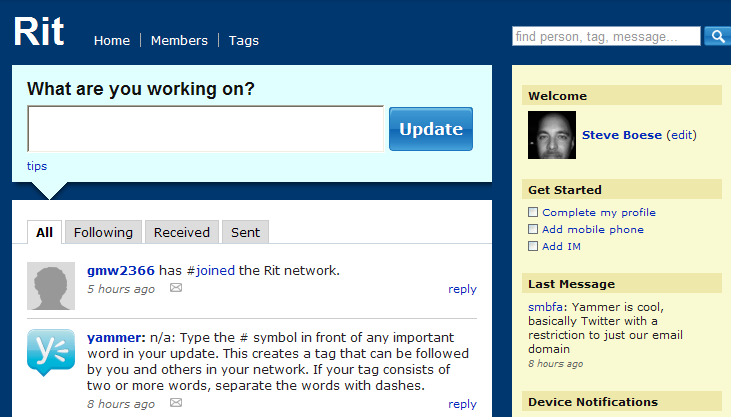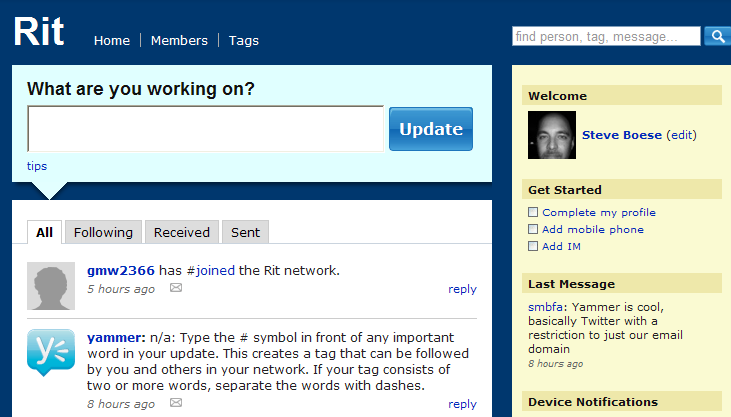Yammer it up
Today we had a mini-crisis with our application that lets Student employees self-register for an Employee Self-service account to view their Payslips, sign up for direct deposit, and view other personal information online. The existence of the problem became known to me when I received an e-mail with the relevant details.
The specifics of the problem are not important, but it was sufficiently complicated that from report to resolution I received a total of 17 e-mails from four different people in less than one hour.
A total of six people were copied on the original e-mail, so in classic e-mail fashion as everyone who jumped into the issue kept checking 'Reply All' every time the web of the e-mail trap spread and spread. And of course, each message itself got longer and longer and larger and larger as all prior messages were appended to the next message.
So in total we ended up with 102 distinct e-mail messages, with the entire content of the original message included in full on each and every message. That must be some great e-mail that we now have 102 copies of it stored on our server.
And all this because across the organization, no other collaboration tools are widely used. Sure one or two of my HR colleagues uses IM to contact me, occasionally we open an IM chat room. I have started a wiki that only has been used my me and one other colleague (although I suspect he is starting to give up). 
I claimed my organization's domain on Yammer - which would have been the perfect tool for all this dialogue. Almost all of the 102 emails were a sentence or two. And other folks who may have been of assistance may have seen the exchange, impossible in e-mail if they were not included from the start. So far only three others in an company of 3,000 have signed up. And two of the three are the HR folks who just IM me anyway.
So many tools are so far superior to e-mail for collaborative work and problem solving, why am I not able to get my organization to see that?
Any suggestions? Because I am not getting the message across.

 Steve
Steve


